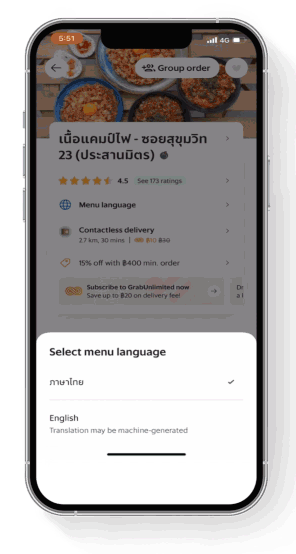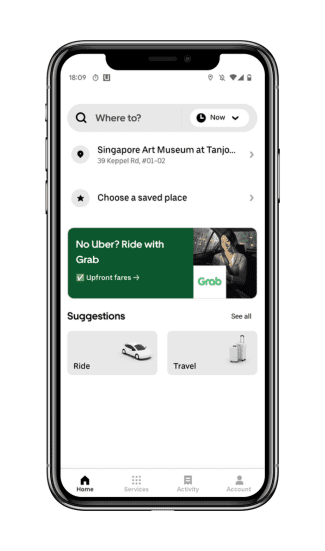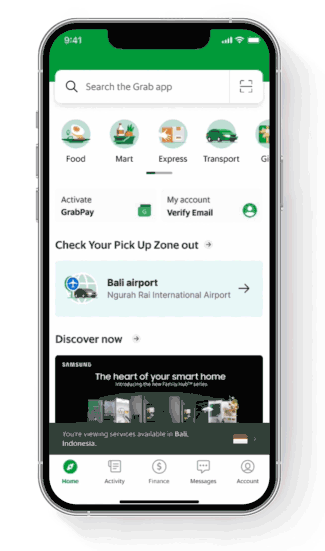Tourism is returning to Southeast Asia and Grab’s superapp is ready to serve travellers
The tourism industry across Southeast Asia is on a steady path to recovery after more than two years of pandemic-induced lull.
In August, the number of international tourist arrivals in Southeast Asia was recorded at more than 7 million visitors, a recovery rate of more than 75 per cent compared to the same month in 2019. At Grab (NASDAQ:GRAB), we saw an almost 30 per cent increase in inbound travellers’ rides to and from airports across the region in the first half of this year from the same period in 2019.
Thailand welcomed more than 21 million international travellers from January to mid-October, putting the country on track to achieving its target of welcoming at least 25 million foreign tourists this year. The country has its eyes set on 50 million tourists in 2025.
Singapore, the region’s concert and event hub, welcomed over 10 million visitors by the end of September this year, and expects tourism to fully recover in 2024.
Chinese travellers to further bolster recovery
Tourism in Southeast Asia is making a comeback, even as the return of Chinese travellers has been slower than expected, mainly because of a weaker yuan and inadequate flight capacity. But the appetite exists, and these are issues that are likely to be resolved over time. Already there are signs of an uptick in inbound travel from China. Indonesia saw a six-time increase in Chinese tourists between January and August this year compared to the same period last year.

Governments in Southeast Asia understand the value of this group of tourists and are actively courting them. In 2019, Chinese tourists spent a combined US$255 billion when they travelled abroad, more than any other country.
In September, the Thai government introduced a five-month visa waiver programme to entice Chinese tourists to visit The Land of Smiles, particularly during the eight-day Golden Week holiday.
The policy is working. Thailand hotel bookings made on Trip.com, China’s top travel booking platform, rose 6,220 per cent shortly after the visa-free scheme was announced.
This, coupled with strong domestic travel, means there is plenty more upside for travel and tourism activity in Southeast Asia. Governments are betting on this. Research by Nikkei into airport expansion plans predicted that across the capitals of Thailand, Vietnam, the Philippines, Malaysia, Indonesia, Singapore and Cambodia, total annual passenger handling capacity in January 2023 will nearly double to reach at least 653 million people by 2030.
Riding Southeast Asia’s travel revival wave
Grab also sees an opportunity here, as tourists are high-value customers that transact in very different ways than regular customers. When people go on holiday, they are willing to spend, so their transaction velocity in a week tends to be higher than regular customers. Tourists can spend twice more on ride-hailing services per day compared to regular users.
At Grab, we have positioned ourselves at the forefront of the travel revival. As the only regional superapp operating in more than 500 cities across 8 countries in Southeast Asia, Grab can be the one app travellers need for hailing rides, ordering food, or getting emergency supplies delivered to their doorstep.
To smoothen the path to adoption, we’ve focused on three areas we know matter the most to travellers: trust and safety, overcoming the language barrier, and making payments easily.
We’ve introduced a traveller homepage which allows users based outside of Southeast Asia to explore cities, our services, and plan their journeys even before they leave their countries.

All key functions in the Grab app are translated and available in multiple languages such as Chinese. We’ve also introduced merchant listings and menu translations in English and Chinese across many key tourist cities in the region to make it easier for travellers to explore and order food delivery.

We understand that payment can be a friction point for travellers, which is why we have integrated the payment methods that they are most comfortable with such as AliPay and KakaoPay, on top of the existing credit and debit cards options.
We also have partnerships with WeChat, Uber and other popular apps that encourage their users to use Grab while in Southeast Asia. Linked with brands they know and trust, tourists do not have to think twice about using Grab.

99.99% of all of our rides & deliveries in 2022 occurred without incident. As the safest ride-hailing platform in Southeast Asia, we know we can help travellers take a lot of anxiety out of their journeys. We’ve done a lot of work at airports and with airport authorities so that from the moment they land, travellers know they have a trusted service they can rely on until their trip is over.
We’ve built up supply around airports and trained our driver-partners so that it’s quick and easy for travellers to get that first ride. We have dedicated Grab waiting areas and lounges at many airports across Southeast Asia. We’re working with various airport authorities across Southeast Asia to be their official transport partner. We’ve also built other features to make the airport experience as seamless as possible for travellers.

No one knows Southeast Asia like Grab does. As travellers continue to make their way back to Southeast Asia, our goal is not only to deliver the safest and most seamless travel experience, but also encourage travellers to explore the richness of Southeast Asia like a local through our superapp offerings.
3 Media Close,
Singapore 138498